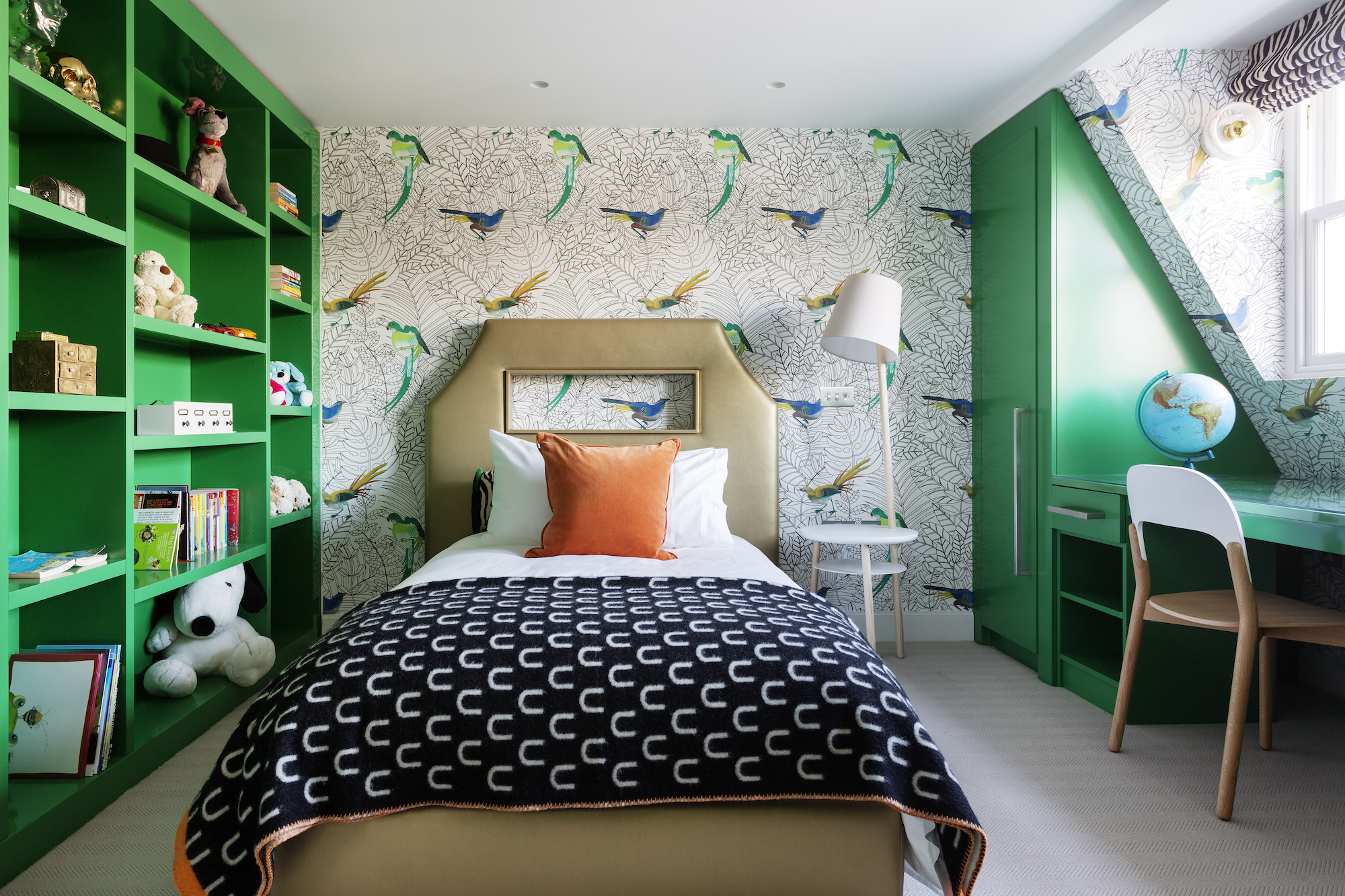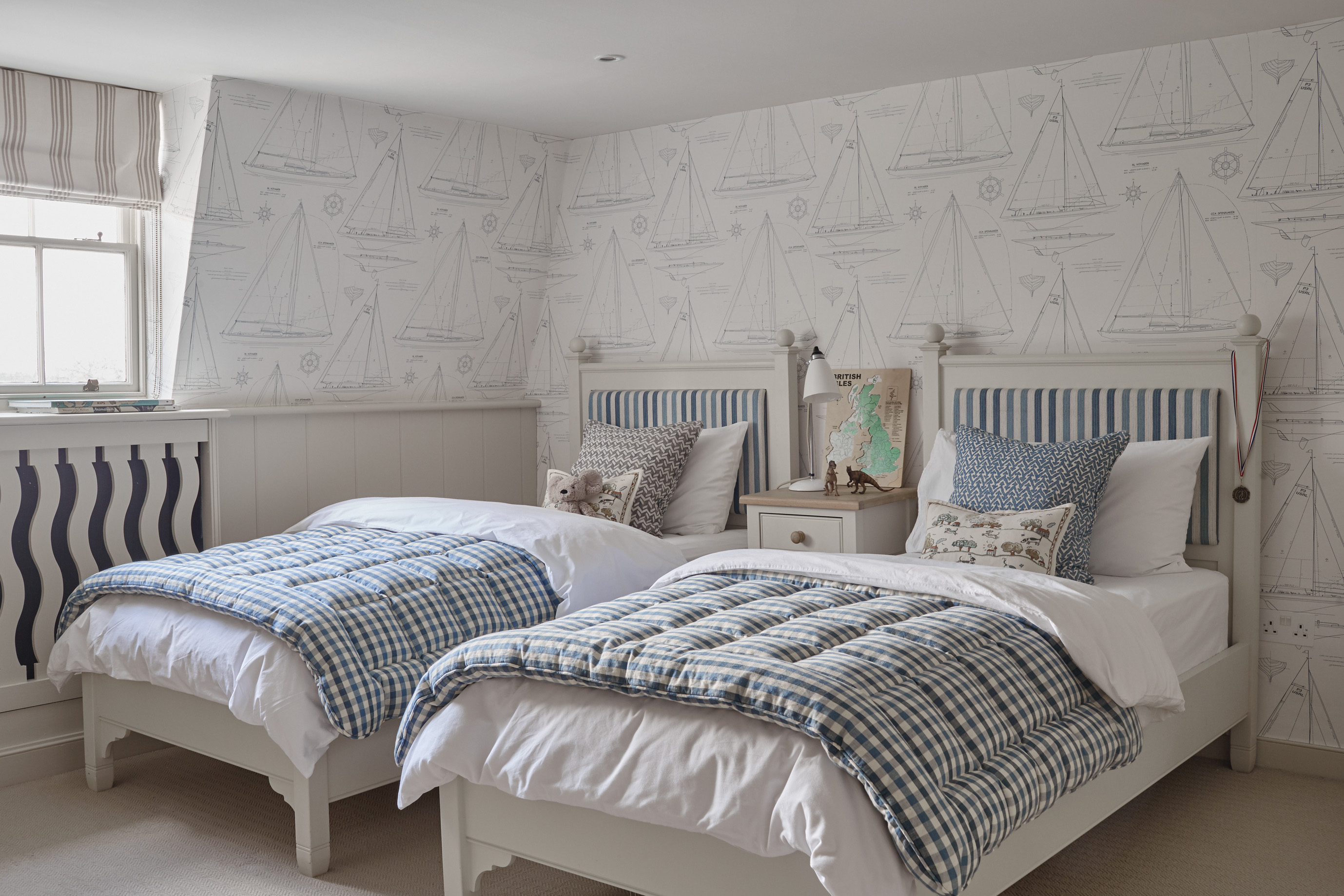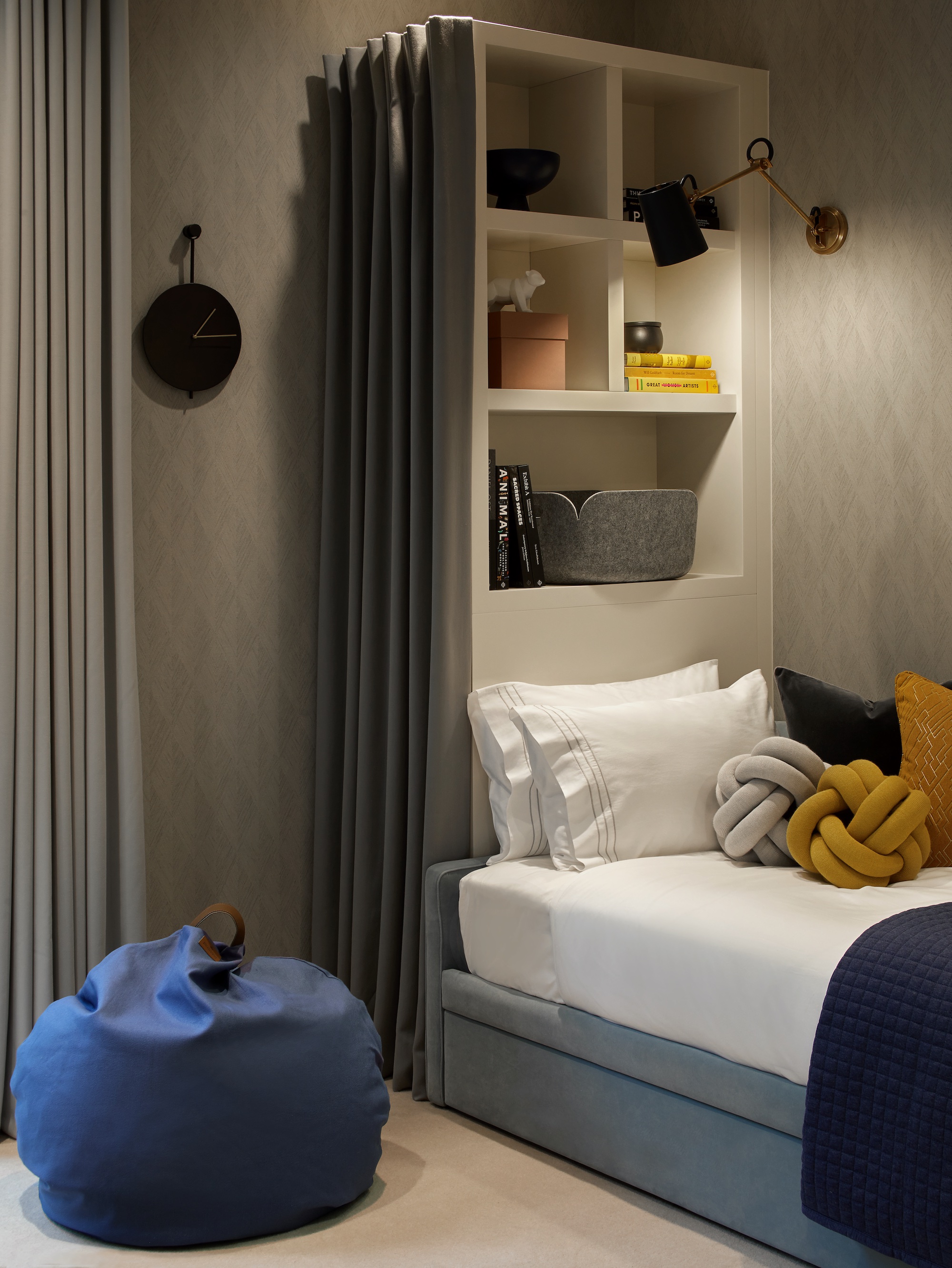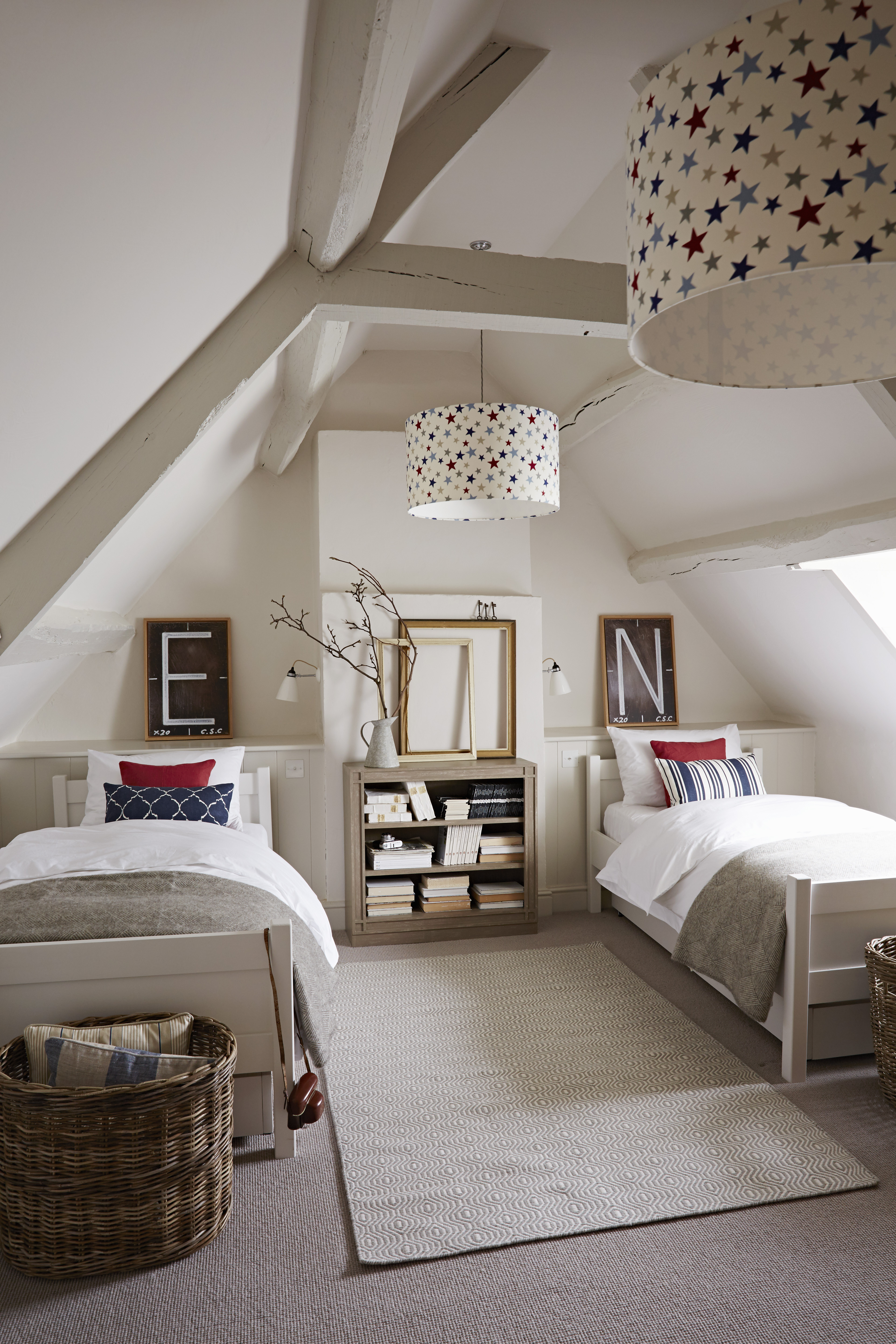How to create the best sleep environment for your child – so they’re happy and healthy
If you want to create the best sleep environment for your child, a dreamy bedroom update is required. Here’s what to do, according to the pros

If you’re living with little ones, you’ll understand the importance of creating the best sleep environment for your child. Getting their zzz's results in better moods, increased productivity, and less chance of meltdowns, not just from them but you, too!
It’s a bit of a buzzword right now, so you’ve likely heard of it, but exactly what is sleep hygiene – and how can we improve it for our children? Put simply, it’s a way to summarize all the environmental factors and habits that can impact sleep.
How you achieve good sleep hygiene will vary depending on your child and their preferences, but there are some things that experts recommend across the board. From slumber-inducing kid’s room ideas and practical bedroom buys to organizing a kid’s bedroom so it’s calm and clutter-free, we’ve listed them below – tick them off one by one, and you’ll soon start reaping restful rewards.
How to create the best sleep environment for your child
Whether it’s bedtime battles you’re facing or midnight wake-ups, these tips should help. However, bear in mind they’re unlikely to work overnight (excuse the pun). When it comes to organizing a home with children in mind, patience and consistency are key to long-term success.
1. Invest in a decent mattress

The first thing that should spring to mind (sorry) when creating a good sleep environment is what your child is actually sleeping on. They may prefer the floor, the sofa, or your bed… but as the parent, know this: investing in the best mattress is key to sweet dreams.
There are a few to choose from, so do your research into what mattress type is best for your child. It’s also worth familiarizing yourself with how to clean a mattress, especially if you’re after cleaning tips for allergy sufferers – there’s nothing as frustrating as your child drifting off, only to be woken by coughs and sneezes. A hypoallergenic topper like this one from Walmart should help with that and has the added benefit of being waterproof, too.
2. Change the bedding

Encouraging little ones to get into bed is much easier if it feels like a fun place to be, so whether it’s fairies or fire trucks, princesses or patrol cars, choose a bedding design that appeals.
‘Getting them into bed is one thing, but you’ll need to consider material if you want them to stay there. A cotton or wool blend is your best bet – keeping them cool in summer, warm in winter, it should keep nighttime complaints at bay’, says Gabriella Dyson, Head of Solved at Homes & Gardens.
You could also try a weighted blanket; these have been shown to reduce the number of night-time wake ups your child experiences. We like this version from Amazon; as it’s got good reviews, and there’s a stylish design to suit any scheme.
3. Clear the clutter
Encouraging sleep goes beyond kid’s bedroom decor. An untidy, cluttered bedroom, full of distractions, can make it difficult to switch off (something to bear in mind when organizing a bedroom for grown-ups, too), so adequate kid’s bedroom storage ideas are essential. Experts also advise removing screens or anything ‘techy’.
4. Get the light right

Every child is different, so ensuring the right environment comes down to trial and error. However, if your child regularly rises with the sun, it’s worth giving their window treatments some thought.
‘Whilst glorious for the daytime, large windows that flood our homes with natural light can prove tricky if not dressed correctly, particularly in children’s bedrooms. To create a restful atmosphere, we’d recommend using multiple layers, such as curtains and a roller blind to prevent light from creeping in at the top or sides,’ says Yvonne Keal, senior product manager at Hillarys.
Carlie Gasia, a certified sleep coach at Sleepopolis agrees, and adds that bright nightlights or alarm clocks are best avoided, too. ‘Try using a specially-designed ‘sunrise’ clock instead,' she says.
‘Great for establishing routine, they can be set to glow at a wake-up time to suit, while the screen brightness can be toned down or turned off completely at night to prevent distractions’.
Hatch Restore Sound Machine Sunrise Clock
View at Amazon
This combination of a sunrise alarm clock and sound machine is one of the best ways to improve your children's bedroom for sleep.
5. Choose relaxing hues

Your child’s preference of course plays a part in paint ideas for kid’s rooms, and who are we to argue – it’s their room, after all. It’s worth being mindful, however, that certain hues are better than others at prompting a restful night, particularly when organizing a nursery.
‘Paler colors tend to be more calming and soothing, both for the child and parents,’ says Judy Smith, color consultant at Crown. ‘A background of pastel yellows, soft blues, aqua greens and warm pinks can be a good basis from which to add more color – you can always add brighter tones on top in stripes and squares, even a whole painted bedroom accent wall, to inject a bit more fun as your child grows’.
Whatever shade you go for, be sure you’re choosing the best paint for your children’s room – think durable, easy to maintain, and most importantly, healthy.
6. Ensure the room smells dreamy
A fresh-smelling kid’s room is a good goal to have anyway, but even more so when you know that it’s potentially contributing towards a peaceful slumber.
Certain scents promote relaxation, so try using a child-friendly diffuser, sleep spray, or mellow lotion so your child can safely benefit’, suggests Carlie.
Certain plants are a natural way to help you sleep better, so it’s worth giving these a go, too. Position them up high, out of reach, so children don’t confuse them with toys.
7. Make some noise
It may sound counterintuitive, but noise can actually help your child sleep. The right kind of noise that is. According to Seattle-based children's sleep consultant and founder of The Slumber Academy Rebecca Michi, this means taking both your child’s age and personality into account.
‘Meditations are great for toddlers and preschoolers to listen to when getting ready for sleep, but laidback or shy children may prefer calming music. Try to avoid anything with singing, as it can be too stimulating,' she says.
If you’re focusing on nursery ideas, she says: ‘many babies and toddlers find listening to white noise relaxing. Personally, I do not! If you can’t stand it, try using pink or brown noise instead – they have the highest tones removed and are easier to listen to’.
8. Set up a reading corner
As well as instilling a love of reading in your little ones, organizing children’s books so they’re neat, tidy, and easily accessible goes much further than you might think.
‘Sitting and reading is not only an excellent bonding opportunity, it's also a great way of physically slowing your child down in readiness for sleep’, says Rebecca.
‘You’ll want to have rules around your bedtime books and decide how many you want to have as part of your routine. Letting your child choose the books you read as part of your bedtime routine can help them feel empowered and make your bedtime go a little smoother,' she adds.
9. Keep things familiar

Part of creating a cozy atmosphere is ensuring your children feel safe and secure. Whether it’s a familiar blanket, pillow, or stuffed animal, letting them take their own ‘comfort items’ into bed with them creates a positive association with sleep at home, and for older children, at sleepovers, too.
‘In addition to the overall feelings of security, a comfort item is an especially helpful tool when traveling or sleeping somewhere besides their own bed. The familiar scent, feel, and appearance allows kids to feel a bit of the safety and coziness of home’, says Denise Iacona Stern, founder and CEO of the Let Mommy Sleep franchise.
FAQs
How can you help children to establish a good sleep routine?
Aside from creating the best sleep environment, experts advise establishing a routine before bedtime. Brushing teeth, putting on pajamas, reading a story, goodnight cuddles, etc. Consistent repetition of around three of four activities means your child knows what’s coming and they’re comfortable with it.
Your chosen routine is up to you; it will likely change as your child gets older, too. Ideally, you’d start it at least 30 minutes before the lights are turned off, and it shouldn’t involve electronic devices of any kind, as these can prevent your child from settling.
Instilling healthy sleep habits in your children now may be met with resistance, but stick with it – evidence shows it creates a happy and positive association with sleep in the long term. They’ll thank you for it later in life!
‘Ensuring children get sufficient, high-quality sleep is important for their health, development, and well-being. However, many factors can disrupt a child's sleep, from an uncomfortable bed to excessive noise or light. By establishing the right sleep environment, parents can give their kids the best opportunity to rest easy’, concludes Michelle Justice, yogi, spiritualist, and CEO of NatureSound Retreat.
Sign up to the Homes & Gardens newsletter
Design expertise in your inbox – from inspiring decorating ideas and beautiful celebrity homes to practical gardening advice and shopping round-ups.
For 10 years, Tara King worked as a Content Editor in the magazine industry, before leaving to become freelance, covering interior design, wellbeing, craft and homemaking. As well as writing for Ideal Home, Style at Home, Country Homes & Interiors, Tara’s keen eye for styling combined with a passion for creating a happy – and functional – family home has led to a series of organization and cleaning features for H&G.
-
 Zooey Deschanel and Jonathan Scott's breakfast nook is an innovative, effective use of kitchen space – it turns a 'dead area' into a cafe-style corner
Zooey Deschanel and Jonathan Scott's breakfast nook is an innovative, effective use of kitchen space – it turns a 'dead area' into a cafe-style cornerJonathan and Zooey have situated an eccentric yet elegant dining area in what may have been an otherwise underused corner
By Hannah Ziegler Published
-
 6 things you should never throw in the trash – and what to do for safe disposal instead
6 things you should never throw in the trash – and what to do for safe disposal insteadFrom batteries to space heaters, experts reveal what not to throw
By Andy van Terheyden Published
